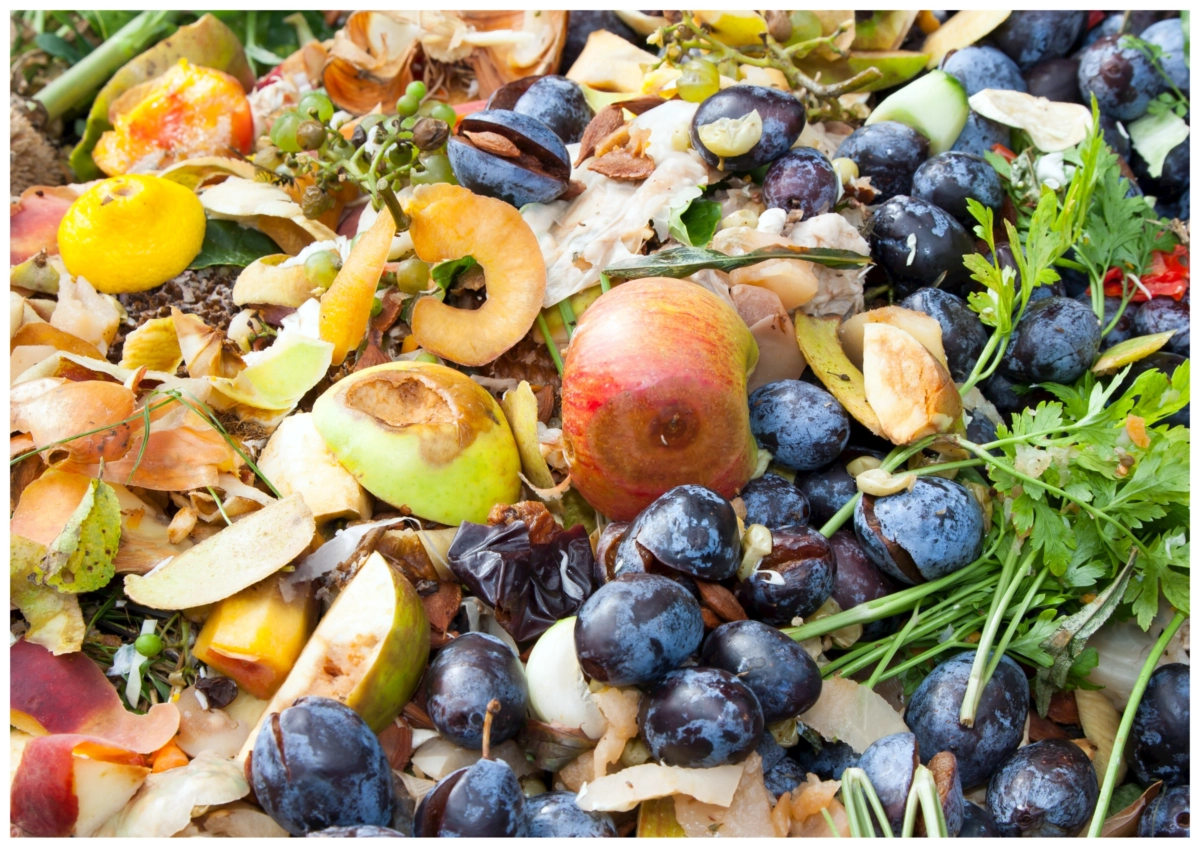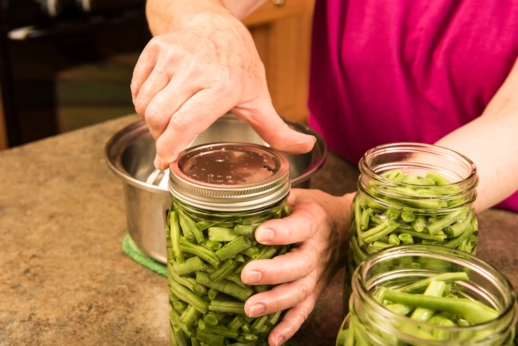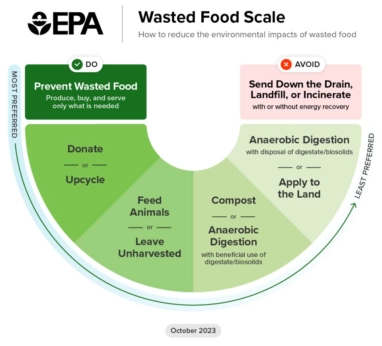A Bulk of Food Waste Happens at Home. Here’s How to Cut Your Footprint.
Experts tips for reeling in unnecessary waste.
A Bulk of Food Waste Happens at Home. Here’s How to Cut Your Footprint.
Experts tips for reeling in unnecessary waste.

Buying less food is key to reducing home waste.by Shutterstock
Food gets wasted at every point in the system. It happens on farms, at factories, in grocery stores and at restaurants. But as we reported in our food waste explainer, the biggest share of wasted food comes from households across the country. In 2022, food waste cost the US $428 billion. Nearly half—48.2 percent—of the country’s uneaten or unused food occurs at the household level.
With numbers like that, it’s clear that wasted food is a big issue, with an impact on the environment and food security. For problems this large, it’s easy to feel like individual action can’t make a difference. But in this instance, since we know that the largest share of wasted food happens at the household level, individual action being impactful isn’t just possible, it’s necessary.
“If we don’t take action as individuals, we will not be able to solve this problem,” says Dana Gunders, executive director of ReFED. “All the grocery store and restaurant work and supply chain work that’s happening out there will not solve this problem without people in their homes changing their food habits as well.”
After talking to some experts in the field, we put together a list of recommendations for cutting down on your food waste at home.
Buy less
While this isn’t particularly groundbreaking, it really is the key to reducing home waste. Don’t buy more than you can consume within a given time period. The thing is, many of us become guilty of this without even realizing it.
There are a lot of different mindsets that can contribute to food waste at home, says Brian Roe, leader of the Ohio State Food Waste Collaborative. Some of these can be very well-intentioned, such as the provider mindset—overprovisioning so as to always have enough on hand for everyone. “Your love language translated into a waste language,” says Roe. “People are more focused on trying to be that good provider and don’t necessarily think about the waste as much.”
When that’s the case, keep a food diary. Every time you toss something out, mark it down. Look for patterns. Are you buying too many bananas? Are you cooking in portion sizes that leave you with leftovers you aren’t eating? Roe also recommends physically collecting the waste in one place. The visual of how much it is can motivate change. Noticing these patterns is the first step in breaking the cycle.
You can also keep track of how much you spend on food and compare it to how much is wasted. Many consumers are financially motivated, and they don’t want to waste money. However, that isn’t always enough of a mindset to reduce household food waste.
“The point of waste and the point of purchase are so far apart,” says Roe. “People aren’t reconciling their books the way a retailer or processor is.”
Store it right
Have you noticed that every time you buy spinach, it wilts before you can use it? Do your raspberries go bad within days? Storing these things properly makes a difference.
Secondly, proper storage can prevent things from getting lost in your refrigerator. Using clear storage containers so you can see what’s inside or marking the contents with labels and dates is a good way to keep what you’ve got at the front of your mind.
Harvest Public Media recently ran a piece about how canning is coming back into style. Canning used to be very popular at the household level, but it has largely fallen out of practice. While many people do this to preserve their garden’s harvest into the winter, you can also draw upon tried and true preservation techniques to avoid throwing away surplus food before it goes bad. Try canning, jarring or jamming.
Lastly, use your freezer to buy yourself extra time. “Freezers are a great way to put a pause button on your food,” says Gunders.

Reevaluate ‘best by’ dates
We’ve all pulled a can of soup out of the cupboard only to see that its “best by” date has long since passed. But these dates are widely misinterpreted, says Gunders. Many actually refer to best quality, not to actual safety.
“There is a small subset of products that can have some kind of increased risk associated with them,” says Gunders. “Deli meat is a great example. But we have no way as consumers to tell the difference at this moment because there [are] no actual legal definitions for the words they use next to the dates.”
There is now a push to create legal uniformity in the language you see on packaging so that it’s easier for you to tell what these dates actually mean. There is a voluntary language guide, which you can find here, but it is not universally adopted.
In the meantime, give things a sniff or taste, says Gunders. If it seems fine, it probably is. Of course, this doesn’t apply to everything. As a rule of thumb, Gunders says the exceptions are likely to be the foods that pregnant women are recommended to avoid.
Try weekly fridge clean-outs
It’s normal to accumulate extras in your fridge. Leftovers that you couldn’t quite finish or some surplus ingredient that you didn’t use all of, such as fresh herbs or half an onion. These are the items that are most likely to be tossed out unnecessarily. But you can reduce these occurrences with a designated day to use them up. Maybe you dress up leftovers with the extra ingredients you have lying around, or perhaps you cook all the extras into a stir-fry or soup. Being intentional about this can reduce the amount of food you toss.
“[Shop] your fridge before you go back to the store to really make sure you’re using stuff up,” says Gunders.
Compost as a last resort
We love compost. But, ideally, you are composting the parts of your food that can’t be used for something else. Roe says that research has suggested that, for some people, reducing food waste upstream and composting the scraps can be complementary attributes of a conscious consumer. But there’s also evidence to suggest that, sometimes, composting wasted food mitigates the guilt that people feel about letting it go bad. To address the food waste problem, compost should be the last resort, not a way to absolve yourself from wasting food.
A lot of things that often get tossed actually have viable uses in the kitchen—think, radish tops in your pesto or zesting your organic citrus rinds. For some clever tips on how to do this (plus many more), check out FoodPrint’s ABCs of Reducing Food Waste.

Get the app
Thinking of creative ways to plan ahead during shopping trips or reuse ragtag ingredients may not be your strong suit. For those of us who might need help imagining what half a bell pepper and some shredded cheese might turn into, there are fortunately an abundance of phone apps that might help, such as Your Food – No Waste Inventory or KITCHENPAL: Pantry Inventory.
Roe recommends Hellmann’s campaign to decrease food waste, where you download the Fridge Night app and it helps you squeeze one more meal out of the stragglers in your fridge.
“You don’t have to be perfect at provisioning, you don’t have to be perfect at storing. But if you have the ability to make up for it at the end and the motivation to find the things in the fridge and put it together, then you are going to save money, get that one more meal a week out of your fridge [and] waste less,” says Roe. “And so, it kind of helps correct for other earlier errors in the chain.”
Learn more. Most of the data used in this article was sourced from ReFED, a leader in understanding food waste through data. Check out its homepage, Insights Engine and Policy Finder for more information.
Let us know. We picked up these tips by talking to experts, but a lot of people have developed strategies from their own experience. Let us know in the comments about a creative way you reduce food waste.
Follow us
This work is licensed under a Creative Commons Attribution-NoDerivatives 4.0 International License.
Want to republish a Modern Farmer story?
We are happy for Modern Farmer stories to be shared, and encourage you to republish our articles for your audience. When doing so, we ask that you follow these guidelines:
Please credit us and our writers
For the author byline, please use “Author Name, Modern Farmer.” At the top of our stories, if on the web, please include this text and link: “This story was originally published by Modern Farmer.”
Please make sure to include a link back to either our home page or the article URL.
At the bottom of the story, please include the following text:
“Modern Farmer is a nonprofit initiative dedicated to raising awareness and catalyzing action at the intersection of food, agriculture, and society. Read more at <link>Modern Farmer</link>.”
Use our widget
We’d like to be able to track our stories, so we ask that if you republish our content, you do so using our widget (located on the left hand side of the article). The HTML code has a built-in tracker that tells us the data and domain where the story was published, as well as view counts.
Check the image requirements
It’s your responsibility to confirm you're licensed to republish images in our articles. Some images, such as those from commercial providers, don't allow their images to be republished without permission or payment. Copyright terms are generally listed in the image caption and attribution. You are welcome to omit our images or substitute with your own. Charts and interactive graphics follow the same rules.
Don’t change too much. Or, ask us first.
Articles must be republished in their entirety. It’s okay to change references to time (“today” to “yesterday”) or location (“Iowa City, IA” to “here”). But please keep everything else the same.
If you feel strongly that a more material edit needs to be made, get in touch with us at [email protected]. We’re happy to discuss it with the original author, but we must have prior approval for changes before publication.
Special cases
Extracts. You may run the first few lines or paragraphs of the article and then say: “Read the full article at Modern Farmer” with a link back to the original article.
Quotes. You may quote authors provided you include a link back to the article URL.
Translations. These require writer approval. To inquire about translation of a Modern Farmer article, contact us at [email protected]
Signed consent / copyright release forms. These are not required, provided you are following these guidelines.
Print. Articles can be republished in print under these same rules, with the exception that you do not need to include the links.
Tag us
When sharing the story on social media, please tag us using the following: - Twitter (@ModFarm) - Facebook (@ModernFarmerMedia) - Instagram (@modfarm)
Use our content respectfully
Modern Farmer is a nonprofit and as such we share our content for free and in good faith in order to reach new audiences. Respectfully,
No selling ads against our stories. It’s okay to put our stories on pages with ads.
Don’t republish our material wholesale, or automatically; you need to select stories to be republished individually.
You have no rights to sell, license, syndicate, or otherwise represent yourself as the authorized owner of our material to any third parties. This means that you cannot actively publish or submit our work for syndication to third party platforms or apps like Apple News or Google News. We understand that publishers cannot fully control when certain third parties automatically summarize or crawl content from publishers’ own sites.
Keep in touch
We want to hear from you if you love Modern Farmer content, have a collaboration idea, or anything else to share. As a nonprofit outlet, we work in service of our community and are always open to comments, feedback, and ideas. Contact us at [email protected].by Lena Beck, Modern Farmer
February 22, 2024
Modern Farmer Weekly
Solutions Hub
Innovations, ideas and inspiration. Actionable solutions for a resilient food system.
ExploreShare With Us
We want to hear from Modern Farmer readers who have thoughtful commentary, actionable solutions, or helpful ideas to share.
SubmitNecessary cookies are absolutely essential for the website to function properly. This category only includes cookies that ensures basic functionalities and security features of the website. These cookies do not store any personal information.
Any cookies that may not be particularly necessary for the website to function and are used specifically to collect user personal data via analytics, ads, other embedded contents are termed as non-necessary cookies.
1.Stop raising “picky eaters”. That is a constant refrain in the comments on recipe websites. That is a learned behavior. 2. Freezer soup. Take that half a green pepper or whatever and collect leftovers in a tub or bag in the freezer. When full, make soup. 3. Return education in the schools in home economics or household management. Provide this also in food banks and community pantries. 4. Can we stop these little bloggers from saying stupid stuff like “go to your pantry/fridge and throw out everything out of date”. I’ve had milk last long after that date. 5. USDA… Read more »
Get a few back yard chickens
I find it very hard to believe (esp after working at restaurants and in other parts of the food chain,a and esp w 30% increase in food prices) that most food waste in US happens in “households”.
I think it really comes down to how much food you’re buying. We have an inclination as humans to buy food before we even need it. Only two bananas left? Better buy another bunch. We cooked all the broccoli? Let’s buy a couple of more crowns. On and on. I think a great strategy is to not be afraid to run out of your favorite foods. Those of us that are lucky enough to be in a position to waste food means we also have easy access to and abundance of food. So you can always run to the store… Read more »
Think like a frontier woman! Collect veggie peels for stock before relegating them to the compost. Stale bread & crumbs become croutons or bread pudding or strata. Corn chip dregs into migas. Freeze chicken bones for stock. Pizza, lasagna, omelettes, & smoothies are great use-it-up meals, too. Or borrow a teenager to make leftovers disappear!
Soups and stews! Every week I cook a pot of beans and see what veggies I have (one sweet potato, half an onion, maybe some greens in the freezer, etc.) with which to make a stew or soup. This way the leftover veggies are eaten rather than tossed into the compost. Plus, it’s fun to be creative and make soups/stews out of random veggies and spices.
Every Sunday I make a frittata with everything that is about to go bad. Fry up some onions in a large cast iron pan, cut everything into bite size pieces, pour cream, eggs, cheese and seasonings over the top and bake. After it’s done I cut it into pieces, putting it into the fridge once it’s fully cool. At my house Sunday is errand day and we are all running in and out of the house at random times. You can grab a slice on the go and use up all your leftovers/about to turn food at the same time.… Read more »
Great guidance on ways to cut food outlay, in $ and calories, which ranks high on DRAWDOWN’s climate solutions! Thanks to my worm “castle,” peels and the little food that spoils wind up as extremely rich soil! Superb how-to guidance to an in-the-kitchen (zero-smell) option to repurpose non-edibles > https://quiviracoalition.org/rural-dryland-composting/
After working at a global organic grocery chain, I can safely say that what we threw into dumpsters in one week couldn’t touch what I threw out in an entire year. A portion of food waste happens at the home level sure, but the overwhelming majority happens at the level of commerce at large before the final consumer even enters the building.